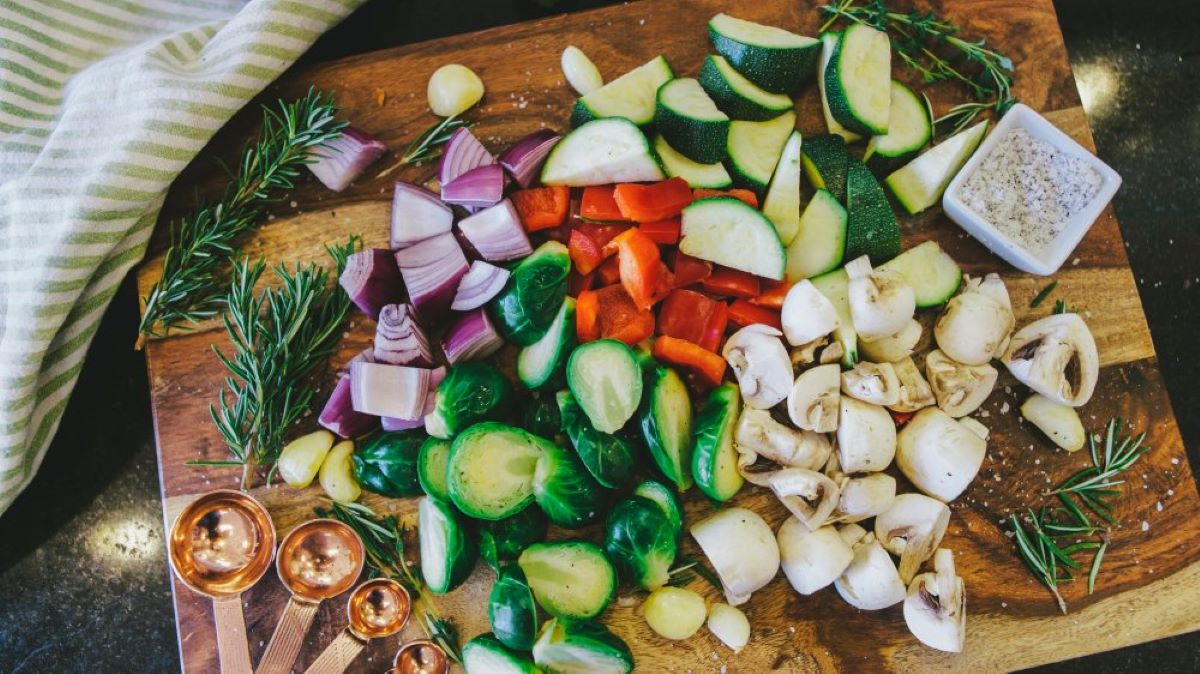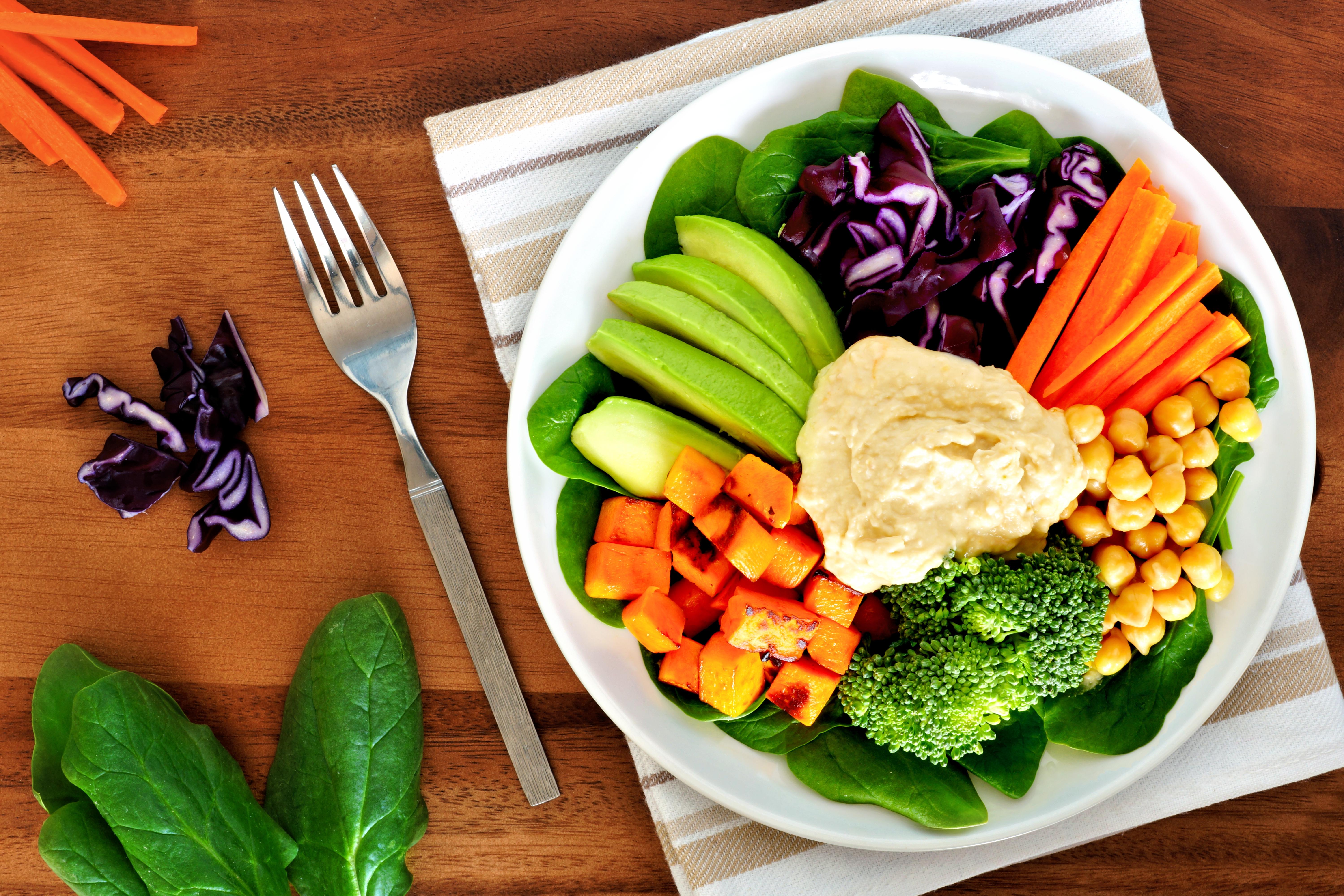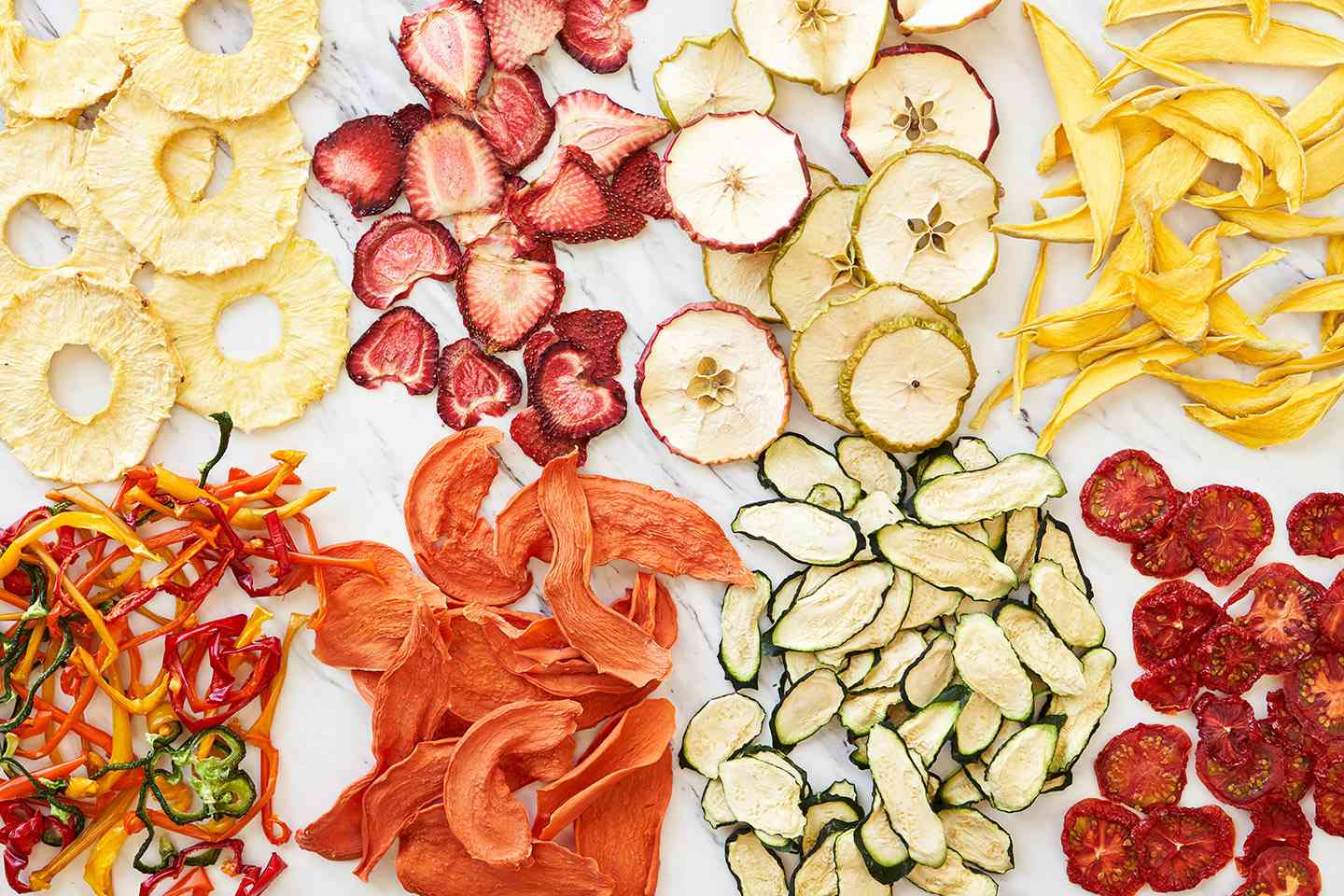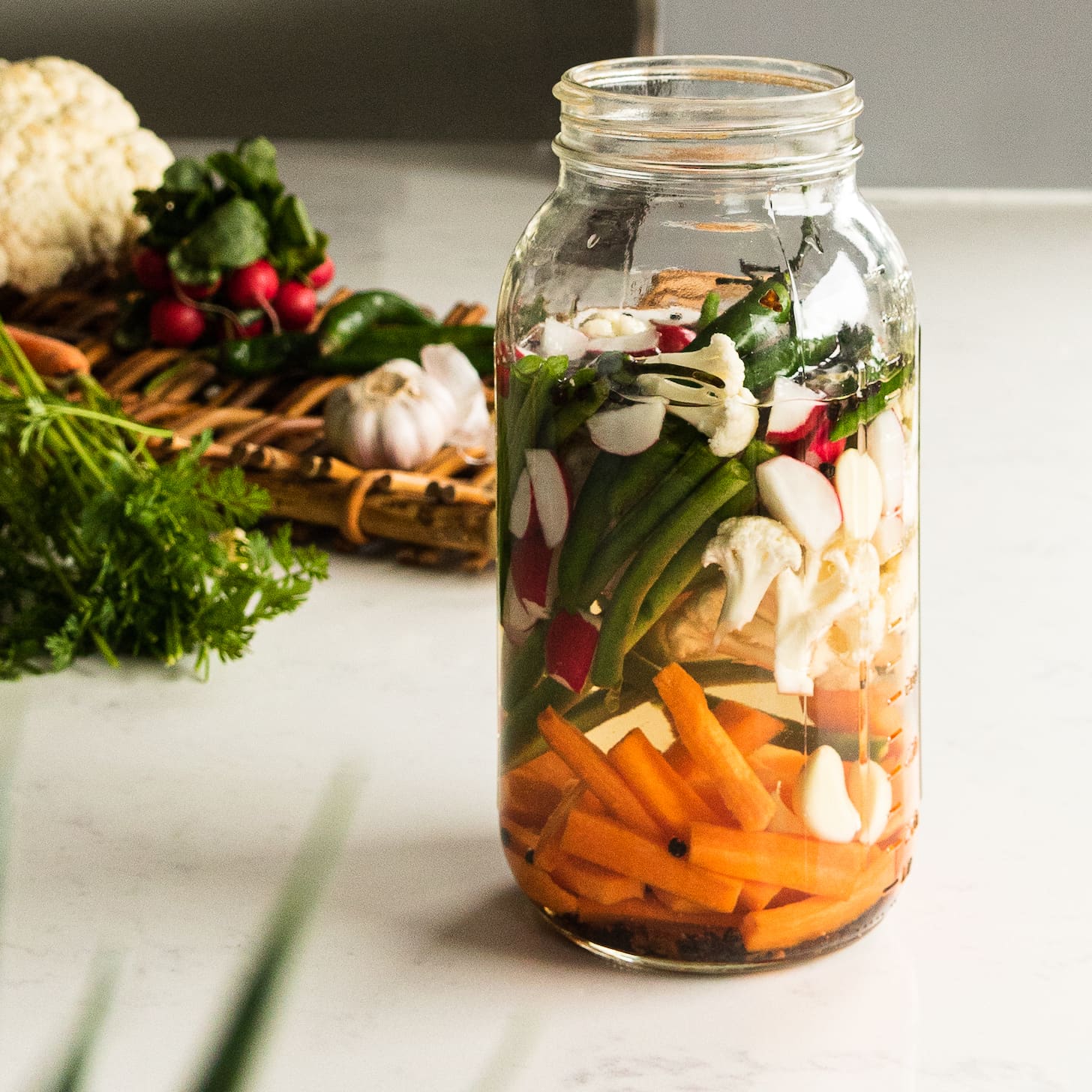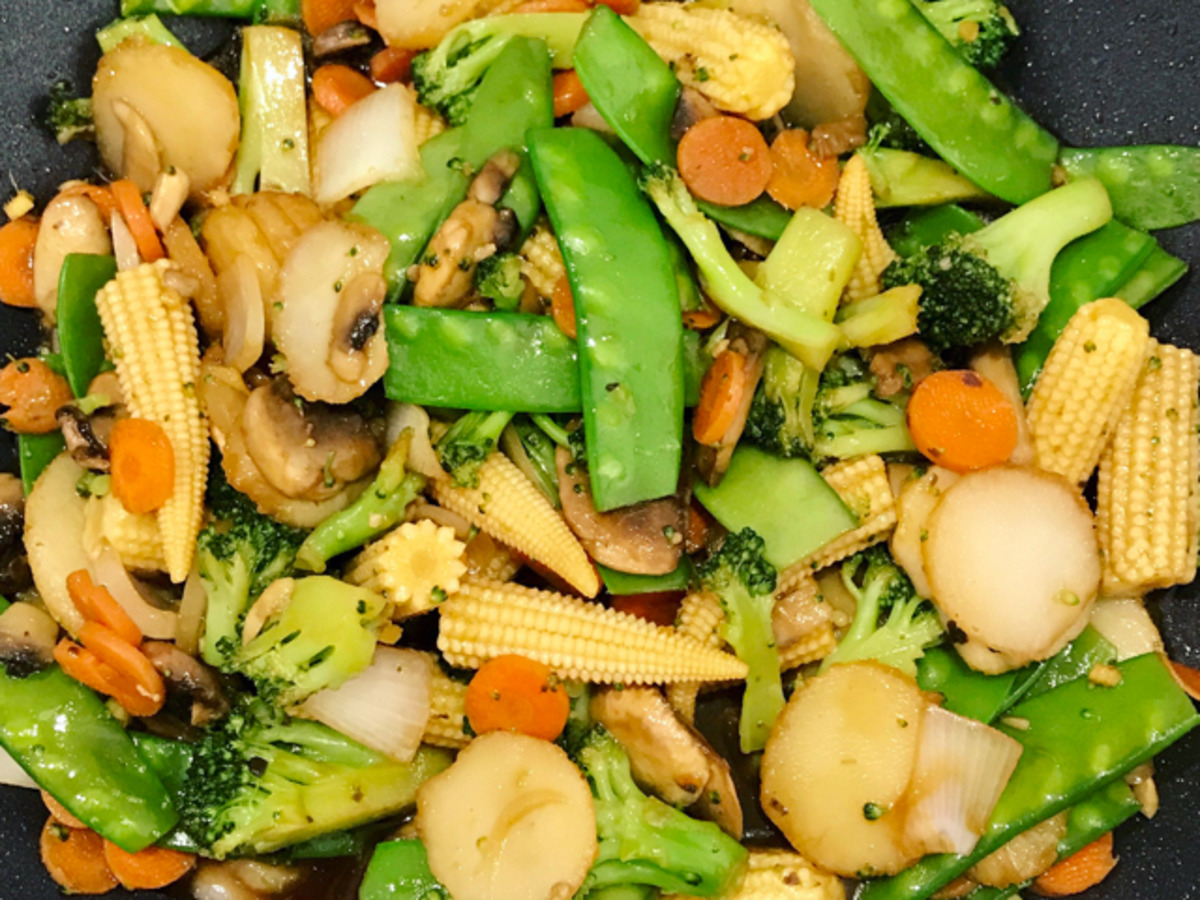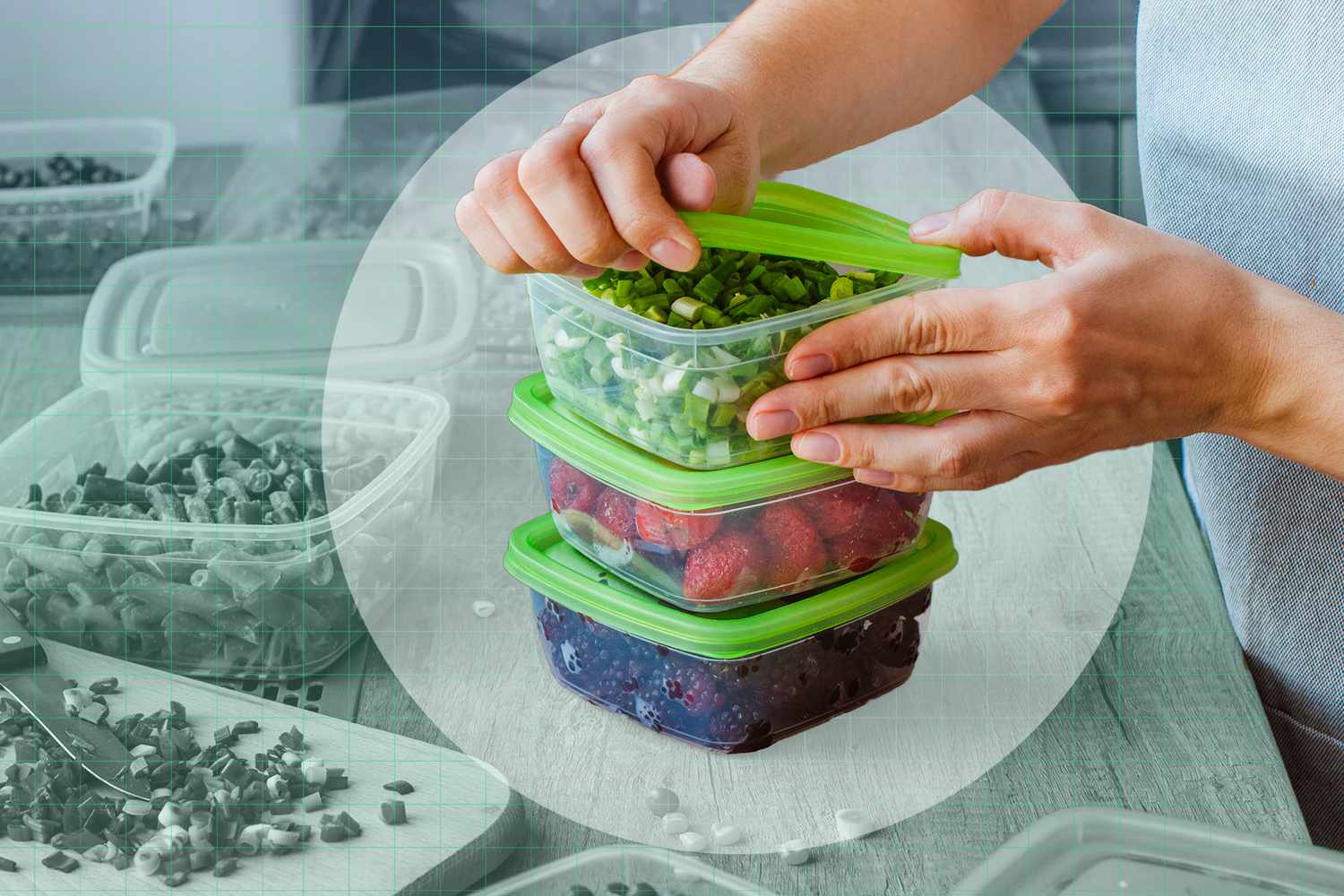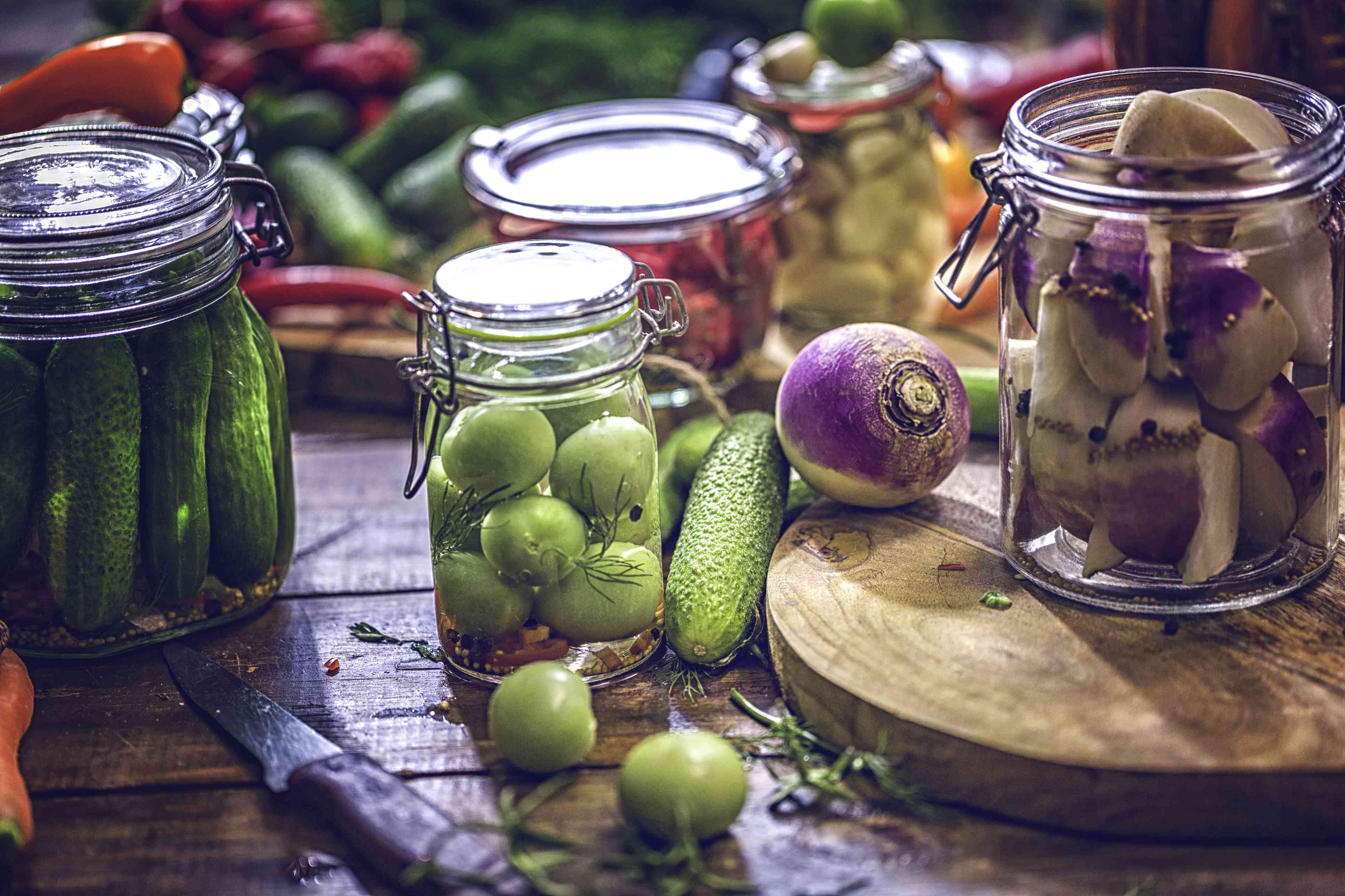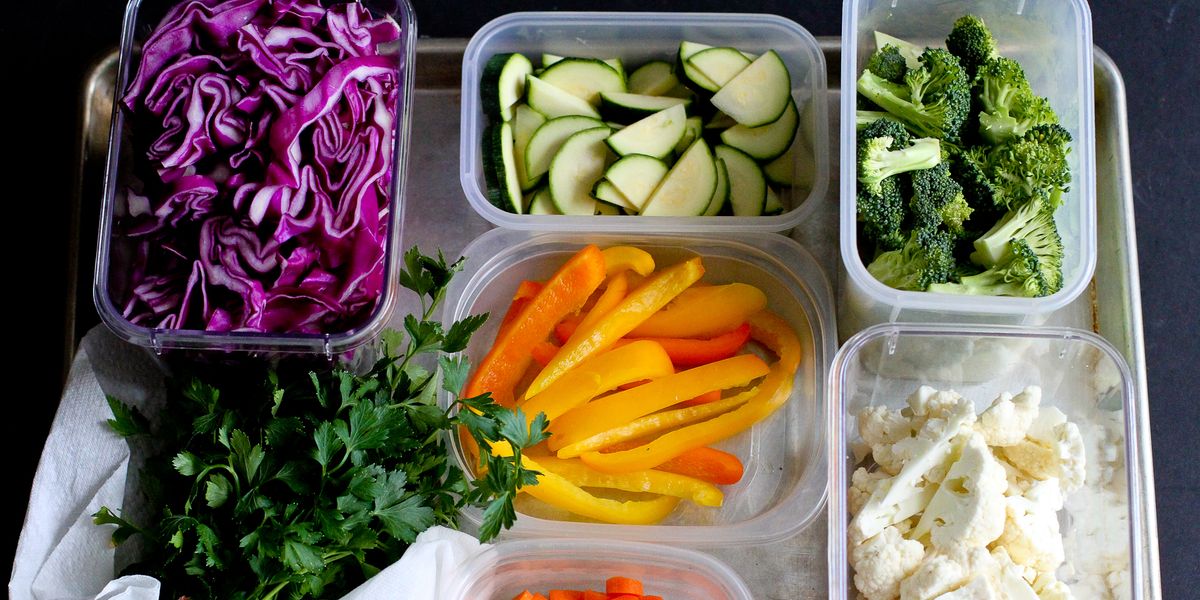Home>Gardening News and Trends>Latest News>How To Pickle Vegetables
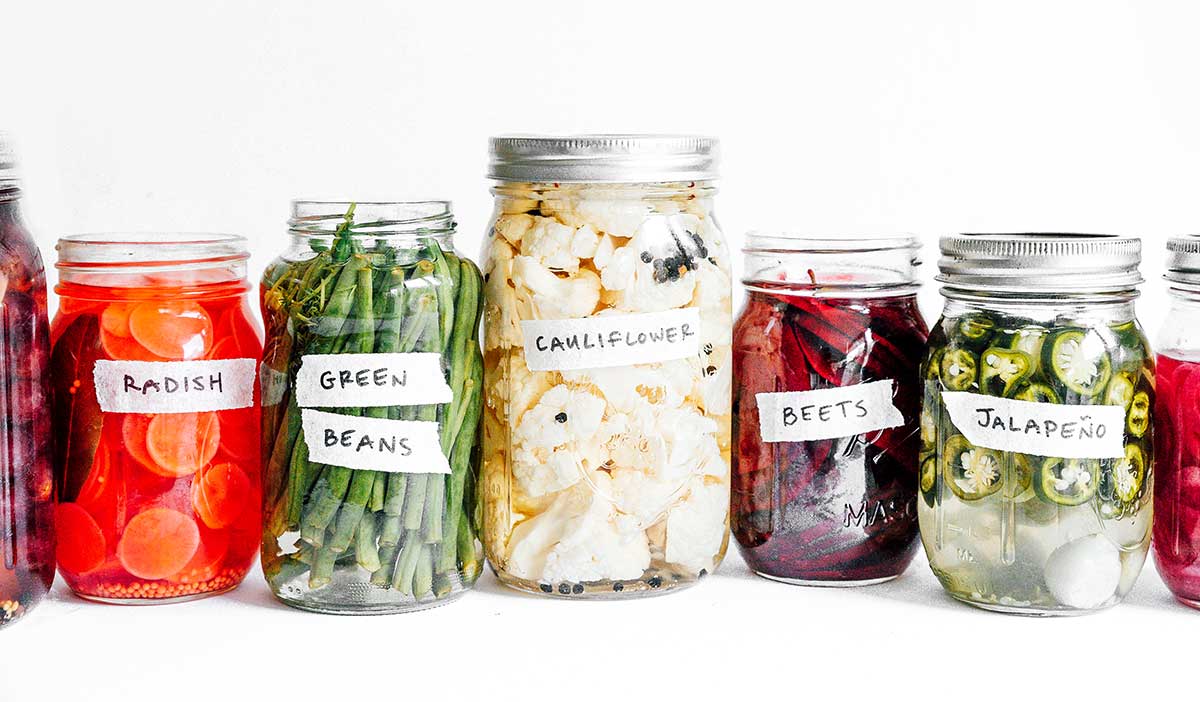

Latest News
How To Pickle Vegetables
Modified: January 22, 2024
Discover the latest news and learn how to pickle vegetables with our easy step-by-step guide. Enjoy homemade pickled veggies packed with flavor and freshness.
(Many of the links in this article redirect to a specific reviewed product. Your purchase of these products through affiliate links helps to generate commission for Chicagolandgardening.com, at no extra cost. Learn more)
Table of Contents
- Introduction
- Benefits of Pickling Vegetables
- Types of Vegetables to Pickle
- Equipment Needed for Pickling Vegetables
- Step-by-Step Guide to Pickling Vegetables
- Tips for Successful Pickling
- Flavoring and Seasoning Options for Pickled Vegetables
- Storing and Using Pickled Vegetables
- Variations and Creative Recipes for Pickled Vegetables
- Frequently Asked Questions about Pickling Vegetables
- Conclusion
Introduction
Welcome to the world of pickling vegetables! If you’re looking to add a burst of flavor and a delightful crunch to your dishes, pickling vegetables is the way to go. Whether you’re an avid home cook or a food enthusiast exploring new culinary adventures, pickling opens up a whole new realm of taste experiences.
Pickling is a process that has been used for centuries to preserve food by immersing vegetables in a brine or vinegar solution. But pickling isn’t just about preservation; it’s also about creating unique and delicious flavors. Pickled vegetables add a tangy and refreshing element to any dish, making them a versatile and exciting addition to your culinary repertoire.
The beauty of pickling vegetables lies in its simplicity and accessibility. With just a few basic ingredients and some patience, you can transform ordinary vegetables into a zesty and vibrant accompaniment that elevates any meal.
Not only does pickling enhance the taste and texture of vegetables, but it also brings a host of health benefits. Pickled vegetables are a great source of vitamins and minerals, while the fermentation process creates probiotics that promote a healthy gut. Additionally, the low-calorie content of pickled vegetables makes them a guilt-free snacking option.
In this article, we will guide you through the exciting world of pickling vegetables. We’ll explore the types of vegetables that lend themselves well to pickling and the equipment needed to get started. We’ll also provide a step-by-step guide to pickling vegetables, along with some helpful tips for success. Plus, we’ll share some flavoring and seasoning options to help you customize your pickled creations.
So, whether you’re craving a tangy pickled cucumber to top off your burger or exploring the world of kimchi and sauerkraut, prepare yourself for a flavorful journey as we delve into the art of pickling vegetables.
Benefits of Pickling Vegetables
Pickling vegetables not only adds a burst of flavor to your meals but also offers a range of health benefits. Here are some of the key advantages of pickling vegetables:
- Prolongs Shelf Life: Pickling is a time-tested preservation technique that helps extend the shelf life of vegetables. By immersing vegetables in a brine or vinegar solution, harmful bacteria are inhibited, ensuring that your vegetables stay fresh and delicious for a longer period.
- Enhances Nutritional Value: Pickling vegetables locks in their nutritional content. The fermentation process involved in pickling increases the bioavailability of certain nutrients and creates probiotics that aid in digestion and promote a healthy gut. Additionally, pickled vegetables retain essential vitamins and minerals such as vitamin C, potassium, and fiber.
- Convenient and Versatile: Once pickled, vegetables can be enjoyed in various ways. They make for a great snack on their own, add a tangy kick to salads and sandwiches, or serve as a vibrant and flavorful side dish. The versatility of pickled vegetables allows you to experiment with different flavors and combinations to suit your preferences.
- Low Calorie and High Fiber: Pickled vegetables are a guilt-free indulgence. They are naturally low in calories, making them a healthy option for weight-conscious individuals. Additionally, pickled vegetables are rich in dietary fiber, offering numerous benefits such as improved digestion and blood sugar control.
- Supports Digestive Health: The fermentation process used in pickling produces probiotics, beneficial bacteria that promote a healthy gut. Probiotics can improve digestion, strengthen the immune system, and contribute to overall gut health. Incorporating pickled vegetables into your diet can help maintain a balanced and thriving gut microbiome.
- Boosts Flavor and Texture: Pickling creates a unique flavor profile that enhances the natural taste of vegetables. The tangy and sometimes slightly sour notes add a delightful zing to your palate. Furthermore, the texture of pickled vegetables offers a satisfying crunch, providing a sensory experience that elevates your meals.
With their extended shelf life, nutritional value, and versatile usage, pickled vegetables are a fantastic addition to any kitchen. Not only are they a delicious and convenient option, but they also offer an array of health benefits that contribute to your overall well-being.
Types of Vegetables to Pickle
When it comes to pickling vegetables, the possibilities are virtually endless. While cucumbers are the most commonly pickled vegetable, there are plenty of other vegetables that can be pickled to add variety and excitement to your meals. Here are some popular vegetables to consider pickling:
- Cucumbers: Crisp and refreshing, cucumbers are a classic choice for pickling. Whether you opt for dill pickles, bread and butter pickles, or spicy pickles, cucumbers are a versatile vegetable that takes well to pickling.
- Carrots: Carrots can be transformed into vibrant and tangy pickled delights. The natural sweetness of carrots pairs wonderfully with the tartness of the pickling brine, creating a delicious flavor combination.
- Radishes: Pickled radishes offer a unique and beautiful addition to any dish. They add a pop of color and a mildly spicy kick that complements various cuisines, from Mexican to Asian.
- Red Onions: Pickling red onions not only adds a tangy flavor but also transforms their strong raw onion taste into a mellow and slightly sweet delight. Pickled red onions make a fantastic topping for burgers, tacos, salads, and more.
- Cauliflower: Pickled cauliflower florets offer a crunchy and tangy twist to your culinary creations. They can be enjoyed on their own as a tasty snack or used in salads and antipasto platters.
- Peppers: Whether it’s bell peppers, jalapenos, or banana peppers, pickling peppers adds a spicy and tangy kick to any dish. Enjoy them in sandwiches, tacos, or as a flavorful addition to relishes and chutneys.
- Beets: Pickled beets not only offer a visually stunning addition to your plate with their vibrant color but also provide a sweet and tangy flavor. They can be enjoyed as a side dish, in salads, or even on sandwiches.
These are just a few examples of the many vegetables that can be pickled. Feel free to experiment with different vegetables and combinations to create your own unique pickled creations. Remember to choose fresh and high-quality vegetables to ensure the best results.
Now that you have an idea of the various vegetables that can be pickled, let’s move on to the next section to discover the essential equipment needed to start your pickling journey.
Equipment Needed for Pickling Vegetables
Pickling vegetables requires a few essential tools and equipment to ensure a successful and enjoyable process. While you don’t need a fancy or elaborate setup, having the right equipment will make your pickling adventures much smoother. Here are the key items you’ll need:
- Glass Jars: Glass jars with airtight lids are the ideal containers for pickling vegetables. Mason jars or other similar jars that can be sealed tightly are perfect for storing and preserving your pickled creations. Make sure the jars are clean and sterilized before use.
- Knife and Cutting Board: A sharp knife and a sturdy cutting board are essential for preparing the vegetables you plan to pickle. Choose a knife that is comfortable to handle and can handle various types of vegetables.
- Cooking Pot: A large cooking pot is necessary for heating the pickling brine and preparing the jars for the pickled vegetables. Opt for a pot that is big enough to comfortably hold the brine and accommodate the jars.
- Measuring Cups and Spoons: Accurate measurements are crucial for achieving the right balance of flavors in your pickling brine. Having a set of measuring cups and spoons will help you follow recipes and ensure consistent results.
- Funnel: A funnel is a handy tool for transferring the pickling brine into the jars without creating a mess. It helps ensure that the brine gets evenly distributed and reduces the risk of spills.
- Sieve or Strainer: A sieve or a strainer comes in handy when you need to drain and rinse the vegetables before pickling. It removes any debris or particles and helps make the pickling process more efficient.
- Storage Labels: Labels are useful for identifying and dating your pickled vegetables. Use waterproof or freezer-safe labels to ensure they stay in place during storage.
- Optional: Canning Kit: If you plan to do a lot of pickling or want to delve into canning, investing in a canning kit can be beneficial. A canning kit typically includes additional tools like a jar lifter, a magnetic lid lifter, and a bubble remover, which can make the canning process safer and more efficient.
Remember to thoroughly wash and clean all equipment before use to maintain hygiene and prevent spoilage. It’s also a good idea to read and follow the manufacturer’s instructions for any specialized equipment you may be using, such as canning kits.
Now that you have your equipment ready, it’s time to dive into the exciting process of pickling vegetables. In the next section, we’ll provide you with a step-by-step guide to help you pickle vegetables with confidence.
Step-by-Step Guide to Pickling Vegetables
Ready to embark on your pickling adventure? Let’s dive into a step-by-step guide that will take you through the process of pickling vegetables:
- Choose Your Vegetables: Start by selecting the vegetables you want to pickle. Wash them thoroughly and remove any blemishes or tough parts. Cut them into the desired shapes and sizes.
- Prepare the Brine: In a large pot, combine water, vinegar, salt, and any additional seasonings or spices for flavor. Bring the brine mixture to a boil, stirring to dissolve the salt and infuse the flavors. Allow the brine to cool completely.
- Prep the Jars: Wash your glass jars and lids with warm, soapy water, or run them through a dishwasher cycle. Rinse them well to remove any soap residue. Alternatively, you can sterilize the jars by boiling them in water for a few minutes.
- Fill the Jars: Pack the prepared vegetables tightly into the jars, leaving some headspace at the top. Pour the cooled brine over the vegetables, ensuring they are completely covered. Leave about ½ inch of headspace from the top of the jar.
- Remove Air Bubbles: Gently tap the jars on a hard surface to release any trapped air bubbles. If needed, use a long utensil or a bubble remover tool to stir the contents gently and remove any remaining bubbles.
- Seal the Jars: Wipe the rims of the jars clean to remove any brine residue. Place the lids on the jars and screw them on tightly. Ensure the jars are sealed properly to prevent air and bacteria from entering.
- Label and Date: Use waterproof labels or a marker to label the jars with the type of vegetables and the date of pickling. This will help you keep track of your pickled creations and their suggested shelf life.
- Store and Wait: Store the jars in a cool, dark place away from direct sunlight. Allow the pickled vegetables to sit for at least 24 hours to develop their flavors. For best results, wait a few weeks before consuming them.
- Enjoy Your Pickled Vegetables: Once your pickled vegetables have matured, they are ready to be enjoyed! Use them as a condiment, add them to salads, sandwiches, or enjoy them as a tasty snack straight from the jar.
Experiment with different vegetables, seasonings, and combinations to create unique flavors that suit your taste preferences. Remember, the longer you let the vegetables sit in the brine, the more pronounced the flavors will become.
Now that you have successfully pickled your vegetables, let’s explore some tips and tricks to ensure your pickling endeavors are a success.
Tips for Successful Pickling
Pickling vegetables can be a fun and rewarding process. To ensure your pickling endeavors are successful and yield delicious results, consider these helpful tips:
- Choose Fresh and Quality Produce: Opt for fresh, firm, and high-quality vegetables for pickling. The quality of the vegetables will directly impact the flavor and texture of the pickled outcome.
- Use the Right Vinegar: Different types of vinegar can impart unique flavors to your pickled vegetables. While white vinegar is commonly used, you can experiment with other vinegars like apple cider vinegar, rice vinegar, or red wine vinegar to add interesting twists to your pickles.
- Balance Flavorings: When adding spices, herbs, or seasonings to the brine, ensure a delicate balance. Too much or too little can overpower or underwhelm the flavor. Start with small amounts and adjust to your taste preferences.
- Don’t Overcook the Vegetables: To retain a satisfying crunch, blanch or lightly cook the vegetables before pickling. Be cautious not to overcook them, as they can become soft and lose their desired texture.
- Experiment with Seasonings: Have fun and get creative with your pickling adventures. Experiment with various seasonings, such as garlic, dill, mustard seeds, chili flakes, or black peppercorns, to add unique flavors to your pickled vegetables.
- Allow Time for Flavor Development: Patience is key when it comes to pickling. The flavors of pickled vegetables develop over time, so resist the temptation to sample them immediately. Allow the pickles to sit for a few weeks or longer for the best flavor.
- Properly Seal and Store: Ensure that the jars are tightly sealed to prevent air and bacteria from entering. Store the pickled vegetables in a cool, dark place, such as a pantry or cellar, to maintain their quality and extend their shelf life.
- Experiment with New Combinations: Don’t be afraid to try new vegetable combinations and flavor profiles. Mix different vegetables together or combine sweet and sour elements to create exciting and unique pickled recipes.
- Keep Notes: Write down your recipes, combinations, and the results of each pickling batch. This will help you remember your favorite recipes and make adjustments for future pickling adventures.
- Enjoy the Process: Pickling is not only about the end result but also about the journey. Enjoy the experience of experimenting, tasting, and creating flavorful pickled vegetables that suit your taste preferences.
Remember, pickling is an art that allows you to explore different flavors and preserve seasonal produce. With practice, you’ll become more confident in your pickling skills and develop a knack for creating unique and delicious pickled creations.
Now that you have some useful tips under your belt, let’s move on to explore different flavoring and seasoning options to add even more excitement to your pickled vegetables.
Flavoring and Seasoning Options for Pickled Vegetables
One of the joys of pickling vegetables is the ability to infuse them with a variety of flavors and seasonings. Whether you prefer a classic dill pickle or want to explore more adventurous flavor combinations, there are countless options to experiment with. Here are some popular flavoring and seasoning options to enhance your pickled vegetables:
- Dill: Dill is a classic herb used in pickling cucumbers. Its fresh and slightly tangy flavor complements the crispness of the cucumbers perfectly. Add a few sprigs of fresh dill to your pickling jars for that traditional dill pickle taste.
- Garlic: Garlic adds a savory and pungent kick to pickled vegetables. You can use whole peeled garlic cloves or minced garlic to infuse a delicious garlic flavor into your pickles. Adjust the amount to your preference.
- Spices: Spices can add depth and complexity to your pickled vegetables. Commonly used spices include mustard seeds, coriander seeds, black peppercorns, red pepper flakes, and celery seeds. Feel free to mix and match spices to create your own unique blend.
- Sweetness: If you prefer a sweeter pickle, consider adding a touch of sweetness to your brine. You can use sugar, honey, or even maple syrup to balance the tanginess of the pickles and create a delightful sweet and sour flavor profile.
- Heat: For those who enjoy a bit of spice, adding chili peppers or hot pepper flakes to your pickling brine can give your vegetables a kick. Adjust the amount of heat depending on your spice tolerance.
- Vinegar Variations: Experiment with different types of vinegar to impart unique flavors to your pickled vegetables. Try apple cider vinegar for a touch of sweetness, rice vinegar for a milder flavor, or red wine vinegar for a rich and tangy taste.
- Herbs: In addition to dill, you can also experiment with other herbs like thyme, rosemary, or tarragon. These herbs add their own distinct flavors and can create a refreshing twist to your pickled vegetables.
- Citrus Zest: For a burst of bright and zesty flavor, consider adding citrus zest to your pickling brine. Lemon, lime, or orange zest can elevate the taste of your pickled vegetables and add a refreshing note.
- Seasonal Fruits: Besides vegetables, you can also incorporate seasonal fruits into your pickling adventures. Add slices of apples, pears, or even berries to create unique fruit-infused pickles.
- Asian Flavors: If you’re interested in exploring Asian-inspired pickles, try adding soy sauce, ginger, or sesame seeds to your brine. These ingredients will infuse your pickled vegetables with a distinct umami flavor and a touch of exoticism.
Feel free to mix and match these flavoring and seasoning options to suit your taste preferences and create your own signature pickled vegetables. Don’t be afraid to get creative and experiment with different combinations to discover unique flavor profiles that you love.
In the next section, we’ll explore the best practices for storing and using your pickled vegetables to ensure their optimum freshness and flavor.
Storing and Using Pickled Vegetables
Once you’ve successfully pickled your vegetables, it’s important to store them properly to maintain their freshness and flavor. Here are some best practices for storing and using your pickled vegetables:
- Proper Storage: Store your pickled vegetables in clean, airtight glass jars in a cool and dark place, such as a pantry or cellar. Avoid exposing them to direct sunlight or extreme temperatures, as this can affect the quality and shelf life of the pickles.
- Allow Maturation Time: While you can enjoy your pickled vegetables within 24 hours of pickling, their flavors will continue to develop and improve over time. For the best taste, allow your pickles to mature in the jars for at least a week or longer.
- Label and Date: It’s important to label your pickled jars with the type of vegetables and the date of pickling. This will help you keep track of their age and ensure you consume them within a reasonable time frame. Most pickled vegetables can be enjoyed for several months, but their flavors may start to diminish after that.
- Variety of Uses: Pickled vegetables are incredibly versatile and can be enjoyed in various ways. Use them as a condiment or topping for sandwiches, burgers, hot dogs, or tacos. Add them to salads or charcuterie boards for an extra burst of flavor. They can even be used as a component in relishes, salsas, or stir-fries.
- Pairings: Consider the flavors of your pickled vegetables when deciding how to use them. They pair well with savory dishes, cheese platters, or cured meats. The tangy and crisp notes of pickles contrast beautifully with rich and fatty foods.
- Creative Recipes: Don’t limit yourself to traditional uses. Get creative with your pickled vegetables! Chop them up and mix them into pasta salads, grain bowls, or wraps. Blend them into salad dressings or dips for an extra tangy kick.
- Refresh the Brine: If you have leftover pickling brine after your pickles are consumed, you can reuse it to pickle more vegetables or refresh the flavors. Simply bring the brine to a boil and pour it over fresh vegetables. However, be mindful of reusing the brine multiple times, as it may lose its potency over time.
- Experiment and Enjoy: Pickling is an opportunity to get creative in the kitchen. Don’t be afraid to experiment with different vegetables, flavors, and seasonings. The beauty of pickling is that it allows you to explore new tastes and enjoy the fruits of your culinary adventures.
Remember to regularly check your pickled vegetables for any signs of spoilage, such as mold or off odors. If any jars show signs of spoilage, discard them immediately to avoid the risk of foodborne illness.
With these storage and usage tips, you can enjoy the flavors of your pickled vegetables to the fullest, making every meal a delightfully tangy experience.
In the next section, we’ll explore some exciting variations and creative recipes for pickled vegetables to inspire your culinary creations.
Variations and Creative Recipes for Pickled Vegetables
Pickling vegetables opens up a world of culinary creativity, allowing you to experiment with unique flavor combinations and create delightful twists on traditional pickled recipes. Here are some exciting variations and creative recipes to inspire your pickling adventures:
- Kimchi: Kimchi is a traditional Korean pickled vegetable dish that bursts with flavor. Typically made with napa cabbage, radishes, and spices, kimchi offers a tangy, spicy, and slightly sour taste. It can be enjoyed as a side dish, added to stir-fries, or used in Korean-inspired recipes.
- Bread and Butter Pickles: If you prefer a sweeter and tangier pickle, try making bread and butter pickles. These pickles are made with cucumbers, onions, sugar, vinegar, and spices like mustard seeds and turmeric. They are perfect for topping sandwiches or serving alongside barbecued meats.
- Pickled Jalapeños: Add a kick to your dishes by pickling jalapeños. Slice the jalapeños and pack them into jars with vinegar, salt, and any desired spices. Pickled jalapeños are excellent in nachos, tacos, salsas, and even on pizzas.
- Pickled Red Beet Eggs: This Pennsylvania Dutch specialty combines pickled beet brine with hard-boiled eggs, resulting in vibrant magenta-colored eggs with a tangy and slightly sweet flavor. They make a striking addition to salads, charcuterie boards, or as a standalone snack.
- Japanese Pickled Ginger (Gari): Gari is a pickled ginger commonly served with sushi. It adds a palate-cleansing, tangy, and slightly sweet element to sushi rolls and sashimi. Make your own gari by pickling thinly sliced ginger in a mixture of rice vinegar, sugar, and salt.
- Sweet and Spicy Pickled Carrots: Add some heat and sweetness to your pickled carrots by incorporating chili flakes and honey or maple syrup into the brine. These pickled carrots make a tasty addition to sandwiches, grain bowls, or as a standalone snack with a kick.
- Pickled Green Beans: Transform crisp green beans into tangy and crunchy pickles. Use a brine with dill, garlic, and peppercorns to infuse them with flavor. Enjoy these pickled green beans as a nutritious and flavorful snack or as part of an appetizer platter.
- Indian-style Mango Pickle: Known as achar, this Indian-style pickle features raw green mangoes that are pickled with a mix of spices and mustard oil. It offers a tangy, spicy, and savory taste that pairs well with Indian flatbreads, rice dishes, and curries.
- Pickled Radish and Carrot Slaw: Thinly slice radishes and carrots into matchstick-sized pieces and pickle them together. The vibrant colors and refreshing flavors make this slaw an excellent addition to tacos, sandwiches, or as a side dish for grilled meats.
- Pickled Watermelon Rinds: Don’t let the watermelon rinds go to waste! Pickle them in a sweet and tangy brine with spices like cinnamon, cloves, and star anise. These pickled watermelon rinds offer a unique and delicious treat that can be enjoyed on their own or added to salads.
Feel free to adapt these recipes to suit your taste preferences and experiment with different vegetables, spices, and flavorings. Don’t be afraid to get creative and make your own unique pickled creations!
Now that you have a variety of recipes to try, it’s time to dive into some frequently asked questions about pickling vegetables.
Frequently Asked Questions about Pickling Vegetables
As you explore the world of pickling vegetables, you may have some questions. Here are some common questions and answers that can help you on your pickling journey:
- How long do pickled vegetables last?: Pickled vegetables can last for several months when stored properly in a cool and dark place. However, their flavors may start to diminish over time. It’s best to consume them within the first year for optimal taste.
- Can I reuse the pickling brine?: You can reuse pickling brine to pickle more vegetables or refresh the flavors, but be mindful of the brine’s condition. If it appears cloudy or has an off smell, it’s best to discard it and make a fresh batch.
- Can I adjust the level of salt or vinegar in the pickling brine?: Yes, you can adjust the amount of salt or vinegar in the pickling brine based on your taste preferences. However, keep in mind that altering the ratio may impact the preservation and flavor of the pickles.
- Do I need to peel vegetables before pickling?: Whether to peel or not is a matter of personal preference and the specific vegetable you’re pickling. Some vegetables, like cucumbers or beets, are often peeled, while others, like carrots or radishes, can be pickled with the skins intact. Peel vegetables if desired or if the skin is tough or bitter.
- Can I pickle vegetables without vinegar?: While vinegar is commonly used in pickling to create a tangy flavor and aid in preservation, you can experiment with alternative methods such as fermentation or using alternative acids like citrus juice or yogurt for a tangy twist.
- Why do my pickles sometimes turn out soft?: Soft pickles can be the result of overcooking the vegetables before pickling or using vegetables that are not fresh or crisp. Ensure you blanch or lightly cook the vegetables and use fresh and firm produce for the best texture.
- How do I know if my pickled vegetables have gone bad?: Signs of spoilage in pickled vegetables include mold growth, cloudy or slimy brine, off odors, or changes in color and texture. If you notice any of these signs, it’s best to discard the pickled vegetables to avoid the risk of foodborne illness.
- Can I pickle vegetables if I don’t have a canning kit?: Absolutely! While a canning kit can provide additional tools and convenience, you can still pickle vegetables without one. Use clean glass jars with airtight lids and follow proper sanitation practices to ensure safe pickling.
- Can I pickle without sugar?: Yes, you can adjust or omit the sugar in your pickling brine if desired. However, keep in mind that sugar can help balance the tartness of the pickles and contribute to their overall flavor.
- What are the benefits of fermented pickles?: Fermented pickles undergo a fermentation process that creates probiotics, which support gut health. Fermented pickles often have a tangier and more complex flavor profile compared to vinegar-based pickles.
Remember, pickling is a versatile and creative process, so don’t hesitate to experiment and find what works best for you. If you have any specific concerns or questions, reach out to fellow pickling enthusiasts or consult reliable sources to further enhance your pickling knowledge.
Now armed with these answers, you’re ready to continue your pickling adventures with confidence!
Conclusion
Pickling vegetables is a wonderful way to unlock exciting flavors, extend the shelf life of fresh produce, and add a unique twist to your meals. From tangy dill pickles to spicy kimchi, pickled vegetables offer a wide range of delicious options to suit every palate.
In this article, we explored the benefits of pickling vegetables, from prolonged shelf life to enhanced nutritional value. We discussed the types of vegetables that lend themselves well to pickling and the essential equipment needed to get started. We provided a step-by-step guide to pickling vegetables, along with tips for successful pickling. Additionally, we delved into various flavoring and seasoning options, explored storage and usage practices, and shared creative recipes and variations.
Through experimentation and creativity, you can customize your pickling recipes to suit your taste preferences and explore a world of flavors and textures. Whether you enjoy traditional dill pickles, unique kimchi variations, or fruit-infused creations, pickling offers endless opportunities for culinary exploration.
Remember, pickling is not just about the end result but also about the journey. Enjoy the process of preparing and pickling your vegetables, as well as the anticipation of savoring your flavorful creations. Share your pickled delights with friends and family, and don’t hesitate to try new combinations and techniques.
So, roll up your sleeves, gather your fresh vegetables, and embark on your pickling adventure. With the knowledge and inspiration gained from this article, you have all the tools you need to become a pickling expert. Get ready to elevate your meals with tangy, crunchy, and utterly delicious pickled vegetables!
